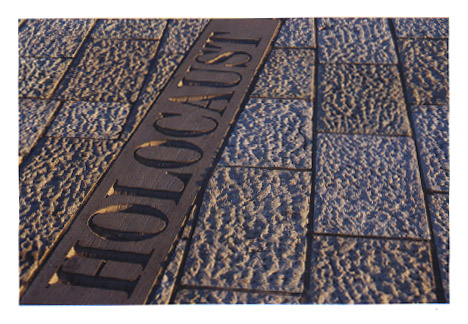
The one thing I did and did not want to see while in Jerusalem was the Holocaust Museum. I did want to see it because I knew I must. I did not want to see it because I knew it would force me to look into the terrifying wickedness of the human heart, and because I would be forced to wrestle again with the troubling why question with God. For sure, the most upsetting portions of the silent tour through the museum’s maze had to do with the children. There were short videos and still pictures of children weeping for fear, hunger, confusion, and panic in the Jewish ghettos. It strikes me more deeply now that I am a parent myself. I can’t help but picture my own little ones in that same situation. What would it be like to hold my small child, as we stand in line behind another parent and child, knowing we are being ushered into sealed “gas chambers” where carbon monoxide will fill these little lungs until death comes? How can we ever begin to make sense of this in God’s world? There was a dramatic rise in Jews who became atheists after World War II. In fact, you could speak of it as a mass exodus of Jews who have left the religious grounds of their fathers and mothers for the new land of secularism. One primary reason for this is that many Jews have not been able to find a satisfactory answer to how God could have just stood by and watched such evil be poured out on His people. So, maybe He simply doesn’t exist.
There are many fine intellectual answers to what we call “theodicy,” or the problem of evil. But the one element that stands out, and speaks not only to the intellect but also to the heart is the cross of Jesus. I know of no other starting place to begin to rightly wrestle with the problem of an all-loving God and the reality of evil in this good God’s world. If you’ve ever read Jewish Holocaust survivor, Elie Wiesel’s memoirs, Night, you’ll remember his dramatic story of the child who was brutally hung by a noose. After being forced to watch the lynching and slow death of a young boy with the other prisoners, Elie answers the question, “Where is God?” by telling himself that God is hanging from the gallows as well. He believed that God is not there. God is dead.Â
While I think Wiesel is entirely wrong on his conclusion that God is in some sense absent or “dead,” I do think that his wording is very accurate. God is up there hanging next to the suffering child. When we are asked by someone (sometimes even by ourselves), “Where is God?”, we must point to the cross of Jesus and respond, “There is God.” The Christian gospel stands out largely because of how it deals with the issue of human suffering. We do not have a God who shies away from it, or who stands idly by, at a safe distance, and watches His creatures pointlessly suffer. Rather, our God entered into our suffering. He stood before the crushing wave of death and died. He ingested it. But in doing so he dismantled the enemies greatest weapon—death. He removed the sting from it. As Paul writes in 1 Corinthians 15:54-57, “Death has been swallowed up in victory. Where, O death, is your sting?” The sting of death is gone because, for those who know intimacy with God’s Son, resurrection awaits them. Suffering still hurts. We hurt intensely at the loss of a person who we deeply love. But the final sting that comes along with the complete loss of that relationship is gone when we realize that God can restore that person to an even fuller state than was ever known before. Â
This doesn’t go all the way and answer the array of questions involved in human suffering. But it is the skeleton key in opening the door to the room. The skeleton key is the cross of Christ! There is no other answer.Â
2 Comments on “The only solution I know of to the Holocaust”
Welcome Home. Thanks for sharing your adventure with us.
You have made an amazing and profound journey that you will be able to share with your beautiful children.